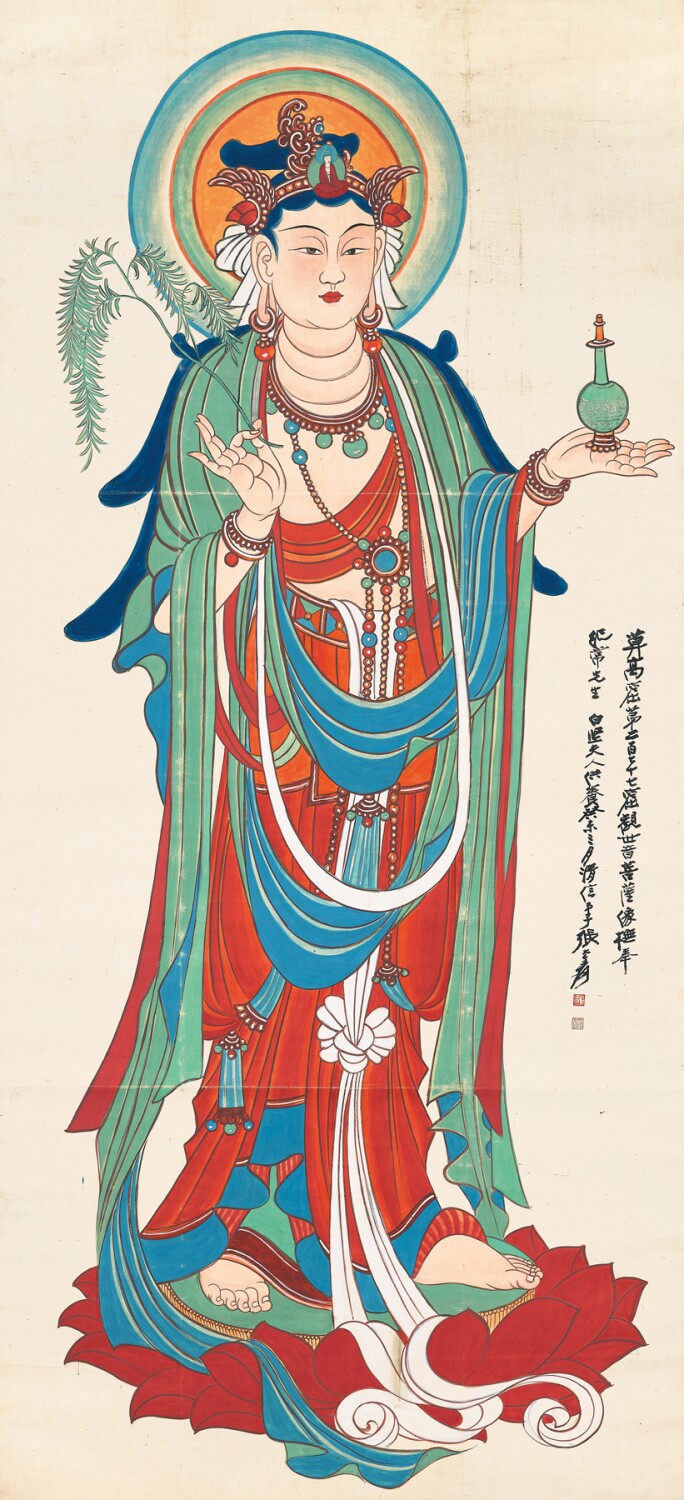I n 1941, Zhang Daqian travelled to the Northwest China to study Buddhist mural paintings in Dunhuang, where he and his entourage of disciples and monks stayed for approximately three years. The first artist ever to carry out such extensive scale of study on this little-known trove, he left the world astounded with his painstakingly created fresco copies. Among them, Portrait of Guanyin from Dunhuang Fresco stands as an excellent example of Bodhisattva fresco art from Tang Dynasty.
The painting was created in the early summer of 1943 as a gift to Gu Zhenglun (1889-1953), the Chairman of Gansu provincial government of the time, and his wife, when Zhang Daqian was about to leave Dunhuang. The reason behind is unknown, but it’s highly possible to serve as a gesture of gratitude to the politician, who might have facilitated the artist’s smooth stay in the caves. This is considered an unusually grand gift, as the artist rarely give fresco art as presents.

The work is inscribed by the artist, stating it is a fresco copy of the Bodhisattva in Mogao Cave number 277. It is noteworthy that the maestro seldom indicated cave number on his copies. Six foot in height, the painting depicts a Bodhisattva in her solemn disposition, through which a gentle kindness is conveyed. The outlines are defined by dynamic and sharp lines, a practise characterised Tang Dynasty figure painting and was adapted by the artist afterwards. The torso – thickly impastoed with mineral-based pigments such as vermilion, azurite and malachite – are reminiscent of the ornate splendor of more than ten centuries ago.

Most fresco copies done by the artist are donated to the National Palace Museum of Taipei and the Sichuan Museum; Portrait of Guanyin from Dunhuang Fresco is one of the few works, preserved in good condition, remaining in private hands.
